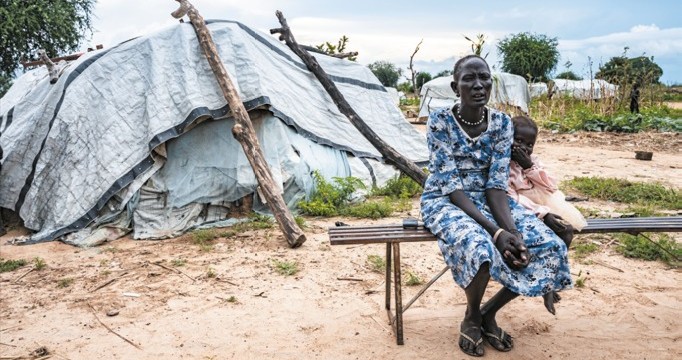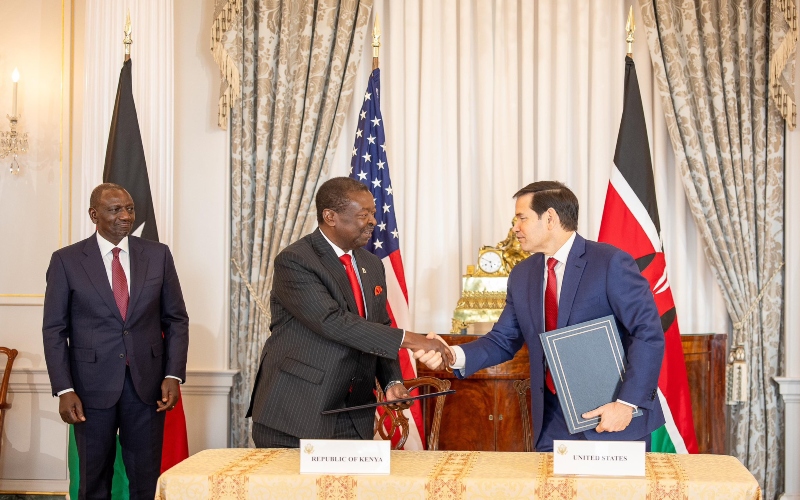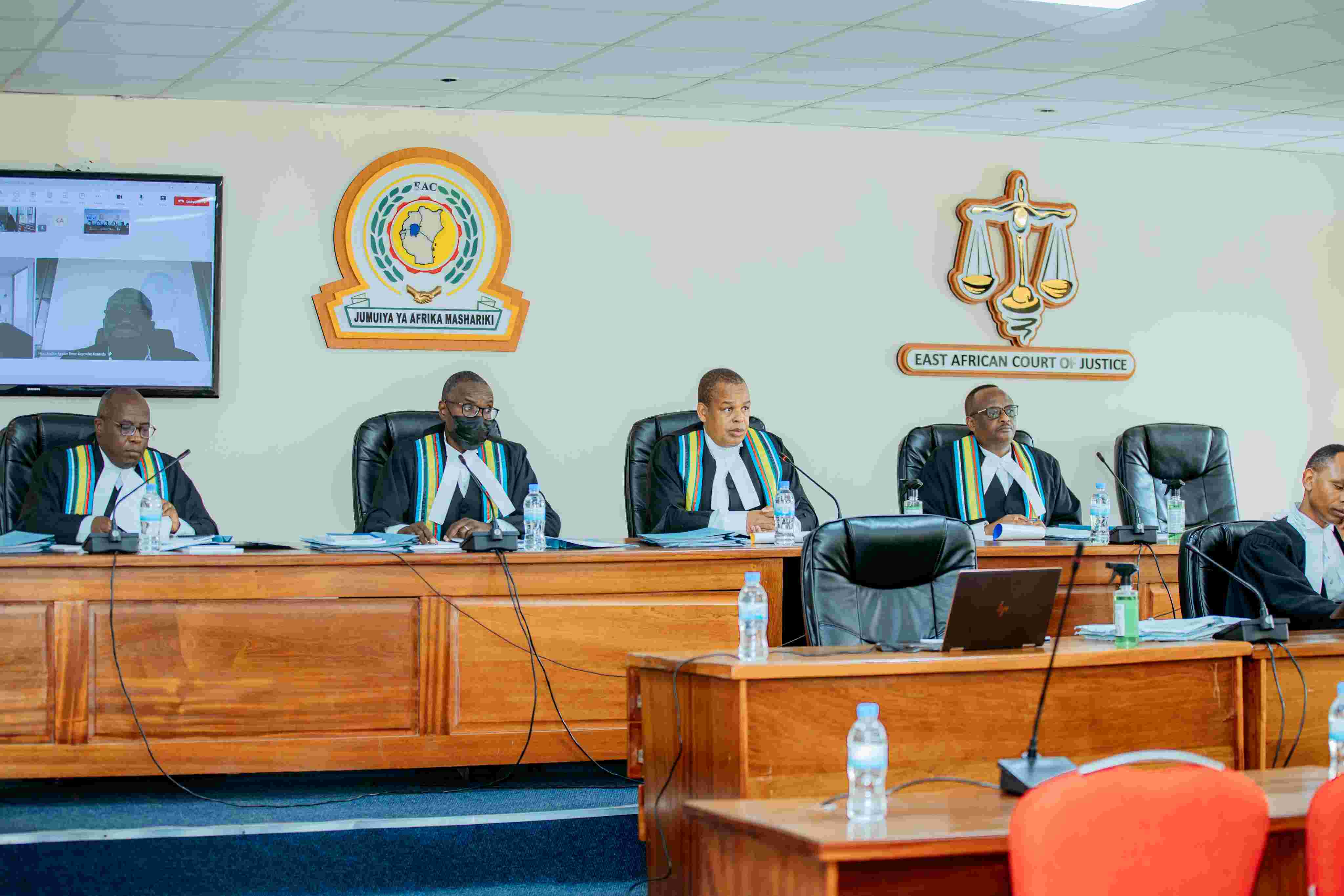Asal counties move to stop spread of stubborn Mathenge plant
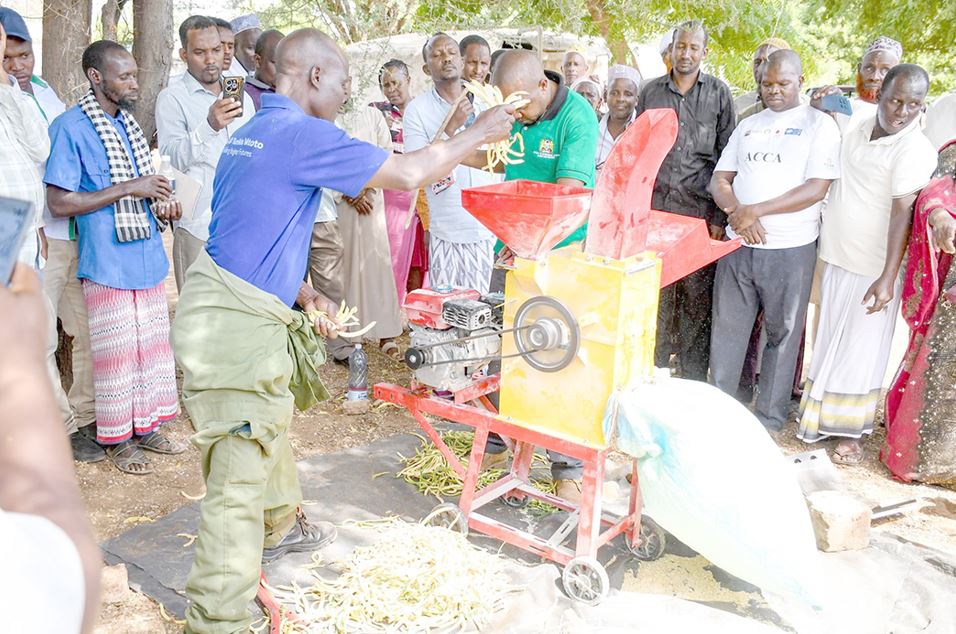
Locals say the tree has for long been a menace and has over time affected the growth of Indigenous trees.
Counties in the arid and semi-arid lands (Asal) have embarked on projects aimed at controlling, managing and sustainably using the invasive and toxic Prosopis juliflora plant, locally known as Mathenge or Prosopis.
The combined initiative by the local communities, donors, local non-governmental organisations, Garissa University, and county and national governments is a response to the damage caused by the plant that was introduced in the country in 1979 to combat desertification and provide fuel.
More To Read
- Alarm as invasive Mathenge plant overruns 1.1 million hectares, threatening livelihoods in 22 counties
- KEFRI, Turkana county launch initiative to manage, utilize invasive Mathenge trees
- Kinna, Merti residents want Mathenge eradication included in Isiolo spatial plan
- Garissa launches project to turn Mathenge weed menace into fortune
- Mathenge tree menace: Isiolo begins research ahead of Sh42m project
- Masalani Municipality declares war on Mathenge weed
Last week, the Kenya Forestry Research Institute (KEFRI) hosted a training at the Garissa Farmers Training Centre on combating Mathenge. The training targeted Garissa and Tana River counties, which are the most affected by the plant.
It was intended to help locals gain skills in adding value to Prosopis products and create jobs in the two counties. Participants were shown how to produce charcoal briquettes and animal feeds, among others, from the plant.
The project is funded by the government of the Netherlands and is supported by the International Labour Organisation (ILO) and PROSPECTS Kenya. It is being implemented by KEFRI in partnership with county governments, the Kenya Industrial Research Development Institute (KIRDI) and the Garissa University.
Osman Ali Aden, a farmer from Garissa County, said he can now save his farm from the deadly Mathenge tree which has invaded almost an acre of his farm in Korakora along the River Tana.
“I got skills to face the challenges of the Mathenge tree and the section of the farm that I had abandoned after it was attacked by the deadly plant will now be put into productive use,” he said.
Osman said the tree has for a long time been a menace and has affected the growth of indigenous trees in Garissa and Tana River counties.
“We are cursing those who introduced this tree, as many indigenous trees in Garissa and Tana River counties are no more,” he said.
Mohamed Aden from Tana River County said he hoped the training would help them control the debilitating effects of the plant in the region.
He said some people at the Bura irrigation scheme were forced to stop crop farming due to a lack of resources to combat the Mathenge tree.
“I will use the knowledge acquired in the training and train more youths to make use of the skills for sustainability,” he said.
Mohamud Abbas, the director of the Organisation for Sustainable Development Africa (Osda) in Garissa, said the farmers who were trained will now be in a better position to reclaim their farms from the invasion by the Mathenge tree.
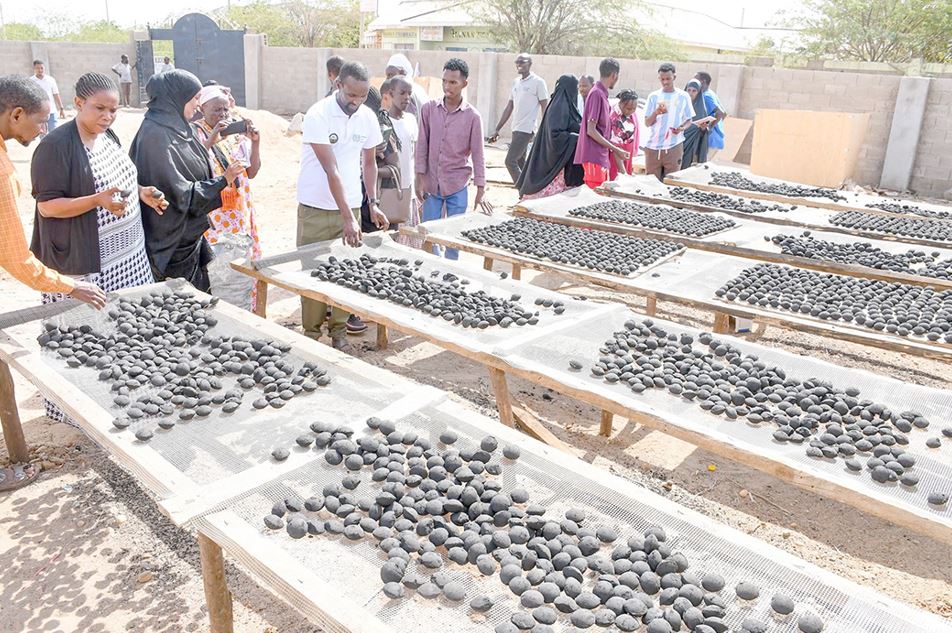 Farmers from Garissa and Tana River counties tour the OSDA plant in Garissa town to see briquettes made from carbonised mathenge charcoal. (Photo: Issa Hussein)
Farmers from Garissa and Tana River counties tour the OSDA plant in Garissa town to see briquettes made from carbonised mathenge charcoal. (Photo: Issa Hussein)
Mohamud expressed concern about how the plant had affected agro-pastoralists who lost both their farms and pasture lands.
“We are doing the carbonisation of Mathenge where we convert the tree’s biomass into carbonised charcoal through gasification,” said Mohamud.
Rare carbonised furnace
He said Osda had imported a rare carbonised furnace which is specially designed for the Mathenge biomass. He said the local community is benefiting from the project since they sell harvested Mathenge to his organisation.
“After producing nine tonnes of charcoal in the Bura project, the charcoal is taken for value addition to the Garissa township project centre. In Garissa town, the charcoal will undergo almost four hours of burning before crushing and turning it into quality briquettes,” he said.
Mohamud said the briquettes produced from the Mathenge plant have been certified as being of high quality and will soon hit both the local and international markets.
He said he formed the community-based organisation to find a solution to the invasive plant. He added that he was motivated by the plan since he was a victim as his parents had abandoned their farm due to the challenges posed by the fast-growing plant.
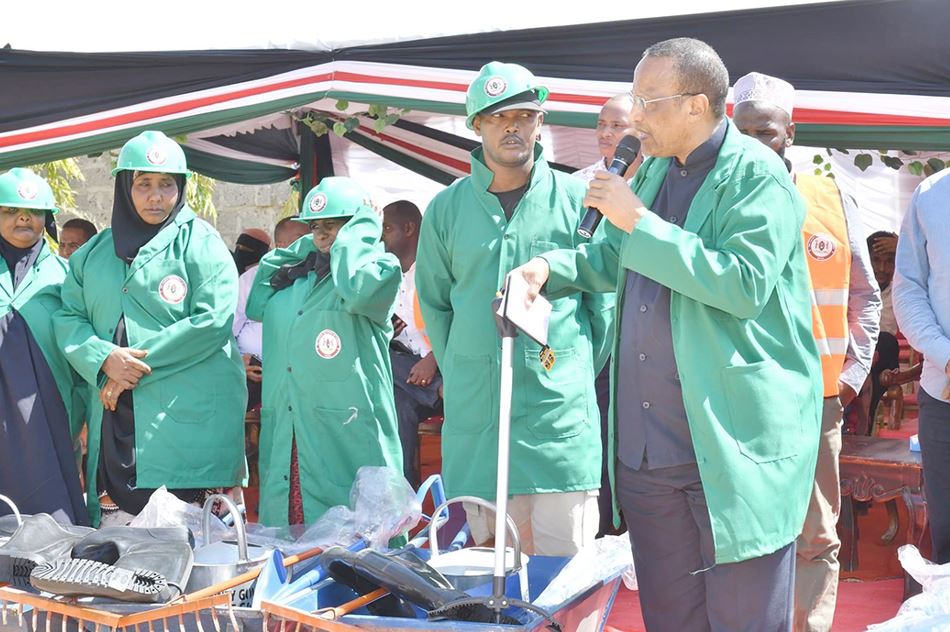 Garissa Governor Nathif Jama launches the Ugatuzi na Kazi programme where 3,000 youth, women and peole living with disabilities were employed to eradicate the mathenge plant. (Photo: Issa Hussein)
Garissa Governor Nathif Jama launches the Ugatuzi na Kazi programme where 3,000 youth, women and peole living with disabilities were employed to eradicate the mathenge plant. (Photo: Issa Hussein)
Abdikadir Aden, an environmentalist in Garissa and founder of the One Million Tree organisation, said the ongoing interventions will help to tame the disastrous tree.
To control the spread of the tree, Garissa Governor Nathif Jama launched the Ugatuzi na Kazi programme in which 3,000 women, youth and people with disabilities were contracted to help in the eradication of the Mathenge plant.
Last month, the Turkana County government, in collaboration with KEFRI, launched a similar programme. County Environment Executive Audan Leah Lokala stated that the initiative seeks to restore the invaded agricultural land at a cost of Sh30 million.
He said the programme also seeks to protect residents from food insecurity, water scarcity and loss of livelihoods caused by the destructive plant.
Top Stories Today
